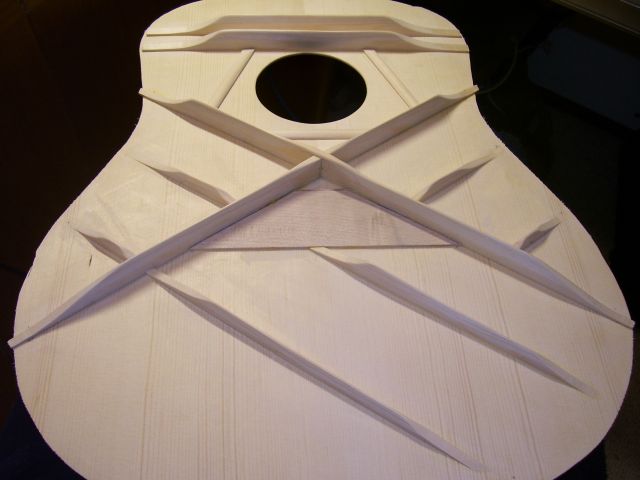Thanks for that link. I'd bet that Larry has used a pretty large sample: he's got it handy, after all, and he knows a lot about the science end of it. I note that his numbers agree pretty broadly with mine, although I'm sure my sample is much smaller.
328 grams seems on the heavy side for a Dread top, but I can't say by how much. I don't build Dreads, and am extrapolating from a few OMs with Red tops that I have weights on. Also, of course, there's no way of knowing just where the 'extra' weight is. If you used a 2x4 for a shoulder brace, and that's where all the excess is, then it's unlikely to effect the tone much. If, OTOH, your tone bars are too deep or wide, that could make a difference. It's most liely that the majority of the excess is in the top plate itself; that's usually 3/4 of the total or more. Also, the final purpose of the guitar has to be taken into account. I'd think that, for a fingerstyle box, it would be over built, but if it's going to Rory Block, or some Bluegrasser who likes to use havy strings and play with a quarter for a pick, then you might want to beef it up.
Ultimately any method of QC you use, be it top weight, static deflection on or off the box, tap tones, Chladni patterns, thickness, or clairvoyance, you're going to have to compare apples with apples. Nobody else makes them quite the way you do, and the most meaningful data you can get is that on your own guitars. My own opinion is that it's hard to have too much information, but that has to be balanced with the amount of time you can spend getting it, filing it, and looking for relationships. I can see the utility of top deflection measurments, for example, but I don't do them consistently, simply because I've already got a lot of other data that, I hope, will fill in that gap.
|

